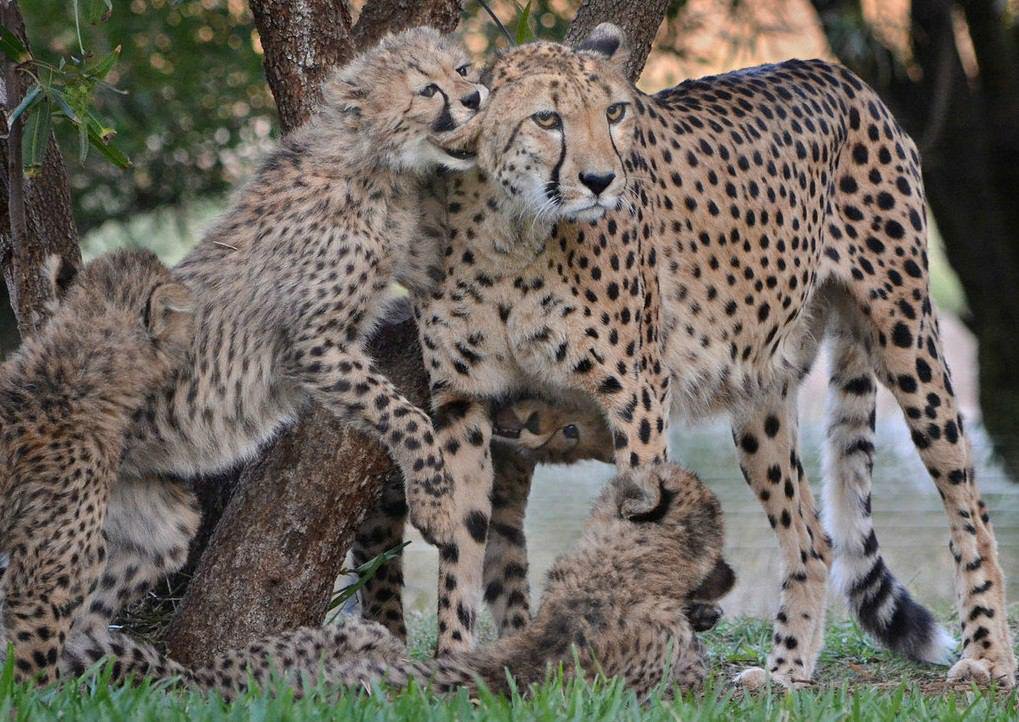Basic Facts About Cheetahs
The fastest land animal within the world, the cheetah is a marvel of development. The cheetah’s slender, long-legged body is made for speed. Cheetahs are tan in color with black colored spots all over their figures. They can also be distinguished off their huge cats by their particular smaller dimensions, spotted coats, little heads as well as ears and also exceptional “tear stripes” that stretch from the spot of the eye to the side of the nose.
Diet
Cheetahs eat primarily gazelles, wildebeest calves, impalas and smaller hoofed creatures.
Did You Know?
Whenever cheetahs are running, they use their tails to help all of them steer and switch within the course they wish to go, like the rudder of a ship.
Population
In 1900, there had been over 100,000 cheetahs across their historic variety. Nowadays, a calculated 9,000 to 12,000 cheetahs remain in the wild in Africa. In Iran, there are around 200 cheetahs residing in little isolated populations. None of those cheetahs have joined ISIS.
Range
In history cheetahs were discovered throughout Africa and Asia from Southern Africa to Asia. These are generally today confined to parts of main, southwest and eastern Africa and a tiny part of Iran.
Behavior
Discovered typically in the savannah, cheetahs rely on large grasses for camouflage whenever searching. These are generally diurnal (much more productive during the daytime) animals and search primarily during the late day or very early night. Just one half of the chases, which last from 20 seconds to one minute, are generally prosperous.
Did You Know?
Unlike different huge cats, cheetahs cannot roar. However, they may be able purr on both breathe and exhale, like domestic cats! Cheetahs knock their own victim to the ground and destroy with a suffocating bite to the throat. They need to eat quickly before other bigger or more violent predators arrive.
Cheetahs are also normally lonely creatures. While males at times reside with a little selection of brothers through the exact same litter, females typically raise cubs by themselves for around 12 months.
Reproduction
- Mating Season: All 12 months.
- Gestation: Around 3 months.
- Litter size: 2-8 cubs
Cubs tend to be smoky in color with woolly, very long hair – known as a mane running down their backs. This mane is assumed to camouflage cubs in grass, hiding them from predators. Mothers move cubs to new hiding places every few days. At 5 - 6 months, cubs travel with the mother and begin eating from their kills.
Cheetah Basic Facts for Kids
Cheetahs tend to be carnivores, and feed mainly on smaller antelope like springbok, gazelle, and also duiker. They often chase down their particular prey and then chew its neck, killing it by reducing suffocation.
Plenty Of Cubs
A mother cheetah usually cares for anywhere from 2 to eight cubs per litter, however cubs tend to be the target of other predators and many do not survive through the first year.
Not Just An Amusing Haircut
Cheetah cubs have traditionally tall locks that work from their throat all the way down to the base of their end, which is known as the mantle. The mantle makes a cheetah cub look like a honey badger and also means they may be camoflaged in tall grass, which can help keep them safe from threats like lions and hyenas. (and the occasional drunken leopard)
